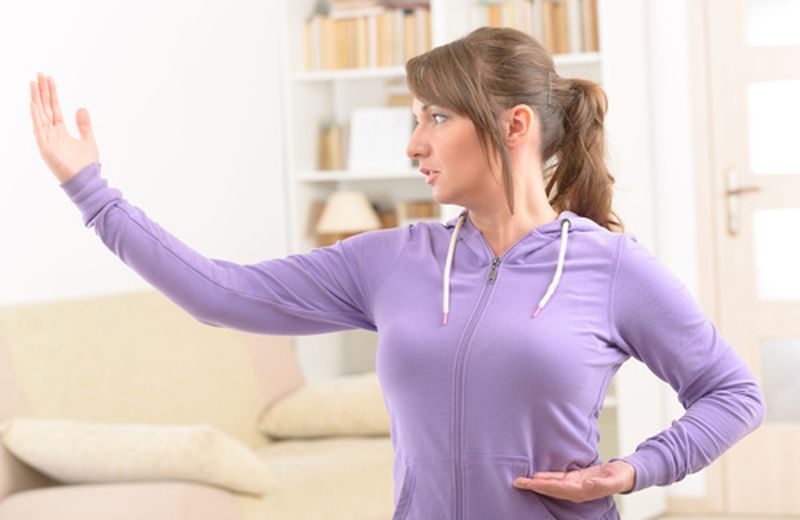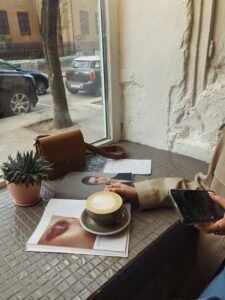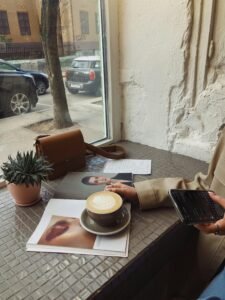Qi Gong, the basic exercises
Some basic Qi Gong exercises, the Chinese art of becoming aware and using life energy, and some information about it.

Despite being among the gentle martial disciplines , qi gong (pronounced ci-gon, with the second vowel halfway between an A and an O and without pronouncing the final G) includes a series of exercises that are part of traditional Chinese medicine .
In fact, the purpose of the flow of the exercises is to make the qi, or vital force , flow , in order to harmonize the yin and yang aspects of our being, the masculine and the feminine, the luminous and nocturnal ones, that of the being and that of doing.
It is basically a series of exercises to stretch muscles , breath control, posture adjustment and weight management, and finally meditation and visualization, all expressed in a very dynamic form.
It is also a very complex and elaborate system , which is not reduced only to a short series of exercises for a daily routine that can be easily learned in a few lessons.
Qi gong has a very deep spiritual and inner side , which binds to the body’s energy system with the opening of specific channels, some main but connected to a multitude of secondary channels that open only with time, giving the possibility to qi to flow throughout the body. The benefits, both objective and subjective, are innumerable , as is the list of exercises.
We will therefore limit ourselves to describing some basic ones, the fundamental ones .
Read also Qi Gong for the eyes, exercises >>
Qi Gong and concentration
Here is an important part of qi gong, as qi can only be directed through the body with a true awareness of the inner energies .
During breathing exercises , one usually begins by focusing all attention on the center of the chest, in the dandien just below the navel, or on top of the head. Concentrating the mind in these points will allow the body to reach a high state of relaxation and therefore to let the qi flow.
Contrary to what the mind imagines, with its logical and rational limits, an internal concentration allows the development of external expression .
Qi Gong and breathing
As early as 600 years before Christ, Lao Tzu defined correct breathing as the best way to master qi. The main breathing consists in the expansion of the abdomen during the inhalation phase, in order to use all the lung capacity .
During the exhalation phase, we will begin by contracting the abdomen, and then empty the central part of the lungs, up to the highest part corresponding to the collarbones, which in this way will allow the shoulders to relax and the qi to flow undisturbed .
Morning warm-up, gentle swing
Rotate your arms and shoulders for five minutes, feeling the movement begin in your pelvis. The legs are not involved in the movement. Slowly rotate the back in both directions to gently massage the internal organs. Then keeping the arms straight and parallel to the ground, we will move them from right to left, crossing one arm in front of the chest each time.
Only then will we spring our knees and release all tension , leaving the pelvis free to follow the swinging but always gentle movement of the arms. During the last part, we will try to free the mind and let the energy flow into it, pacifying it.
Qi Gong, rebound exercise
For about three minutes, keeping the feet parallel to each other for the same width as the shoulders, we will jump gently , letting the arms, emptied of energy and will, swing neutral and free, like pieces of cloth.
Totally relax your shoulders until you reach a feeling of zero in the upper body, which is the perfect background for the flow of qi. In this way the qi can tone internal organs , legs and arms.
Advanced qi control
At a more advanced level, when you begin to perceive qi, then there are exercises, related to breathing and visualization, to direct it, to extend it, to accumulate it and so on. Although we often find descriptions of these types of exercises online, experience tells us that they can rarely be done without the vigilant support of a true teacher .




























+ There are no comments
Add yours